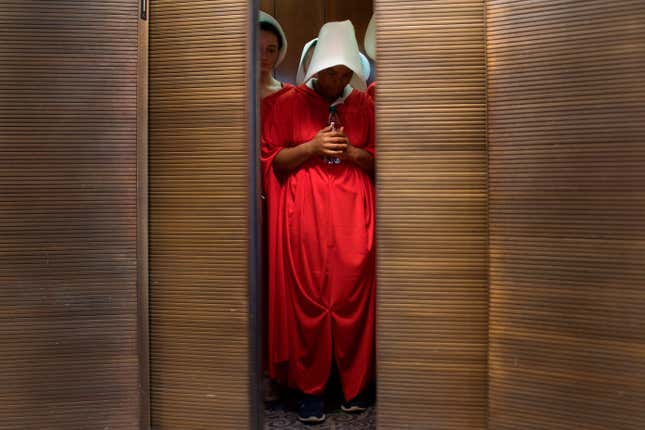We’re Seeing More Abortions Depicted on TV, But It’s Not Necessarily Helping the Cause
More on-screen characters are getting abortions, which is great, unless the stories aren't accurate depictions of reality.
AbortionPolitics

In a Law and Order: SVU episode earlier this year, a teenage girl of color, Nydia, is hospitalized, and it’s revealed her abusive foster father who impregnated her had crushed up and added medication abortion pills — mifepristone and misoprostol — to a smoothie she drank, to attempt to induce an abortion against her will. A nurse says that not only has a toxicology test indicated the pills in Nydia’s system, but that the nurse has shared this revelation with the cops investigating Nydia’s case.
Renee Bracey Sherman, founder of We Testify, was outraged by this particular SVU storyline. Bracey Sherman, who’s had an abortion herself, leads and supports other people who have had abortions — including a number who have used abortion pills — in sharing their stories, and told Jezebel the SVU plot was not only wildly inaccurate, but also dangerous.
“As we’re looking at a moment where abortion is potentially becoming and already criminalized in a number of states, to have that on a show about a police savior complex, that reaches a lot of people — that’s really scary because then somebody might not go to a hospital, or go to anybody if they need help,” Bracey Sherman said. “They’re afraid somebody will call the police and show their toxicology scan, whether or not they took the pills. But it’s literally not true.”
Contrary to SVU’s portrayal, abortion pills are highly safe and can’t be detected by toxicology scans; nor can the pills be medically discerned from a miscarriage. Even if that were the case, health providers disclosing such medical records with law enforcement could have a devastating impact: A number of disproportionately people of color, like Purvi Patel and Bei-Bei Shuai in Indiana, have faced criminalization for feticide and child endangerment after going to the hospital following pregnancy loss.
This SVU plotline from earlier this year is one of dozens of abortion storylines throughout 2021 that reflect how, for better and worse, on-screen abortion storytelling is changing. According to the reproductive health research organization ANSIRH’s 2021 on-screen abortion report, this year, there were 47 abortion plotlines on 42 television shows — up from just 31 plotlines last year. These plotlines included more depictions of medication abortion than ever, as well as more depictions of parents getting abortions and people supporting friends after their abortions.
ANSIRH’s report focuses on television, but this year also saw a number of new movies focused entirely on abortion and reproductive health care-related barriers, like Hulu’s buddy road trip comedy Plan B and the horror movie False Positive, which depicted abortion, pregnancy complications, and medical abuse. Just last year, Never Rarely Sometimes Always focused specifically on one young woman’s journey to overcome barriers to abortion access in Pennsylvania.
More — and more accurate — representation of abortion has always been important, and all the more so right now, with a case likely to gut Roe v. Wade at the Supreme Court, and amid a year that’s seen more state-level abortion restrictions enacted than any other year on record.
“It’s important for TV and film to help us understand what it really takes to get an abortion in the US,” ANSIRH researcher Steph Herold told Jezebel. Unfortunately, of the 47 abortion stories on-screen this year, Herold says, “Just two plotlines actually show barriers to abortion access”: This Is Us, which features a teenage Kate in 1999 forced to wait 24 hours before getting an abortion, and The Handmaid’s Tale, which shows a flashback of Janine trying to get an abortion and being preyed upon by an anti-abortion crisis pregnancy center that feeds her misinformation.
Mandatory waiting periods and predatory crisis pregnancy centers are just two pieces of a vast, sticky web of legislative, geographic and cost-related barriers to getting care. Of the roughly 1,300 state-level abortion restrictions in the books, almost half have been enacted in the last decade — but on-screen storytelling doesn’t depict these realities.
-

-

-

-

-

-

-

-

-

-

-

-

-

-

-

-

-

-

-

-

-

-

-

-

-

-

-

-

-

-

-

-

-

-

-

-

-

-

-

-








































